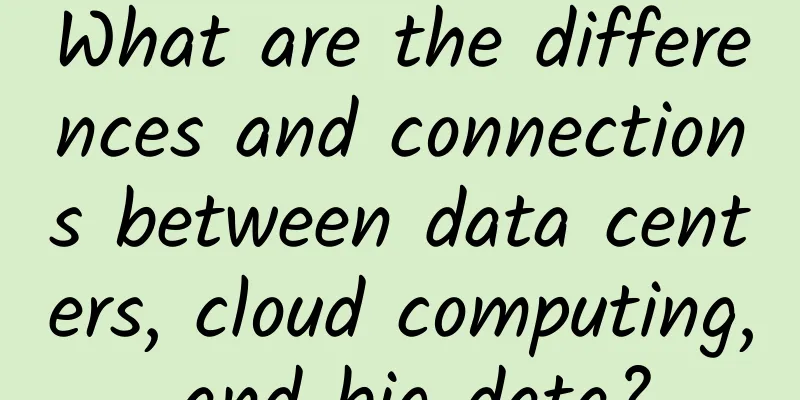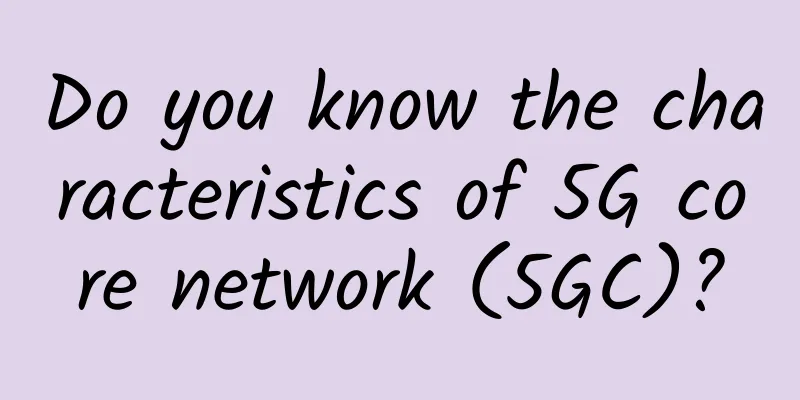What are the differences and connections between data centers, cloud computing, and big data?

|
Many people confuse data centers, cloud computing data centers, and big data, thinking that these three are the same product. In fact, there are significant differences. The data center room is a set of complex facilities. Today, cloud computing is about to become a public resource in the information society, and the data center is the infrastructure that supports cloud computing services. Since the emergence of cloud computing, all information technology has begun to revolve around it. Cloud computing exists like a god. Let's take a look at the differences and connections between data centers, cloud computing, and big data.
Data Center Data Center is a global collaborative network of specific equipment used to transmit, accelerate, display, calculate and store data information on the internet network infrastructure. Most electronic components in the data center are driven by low-voltage DC power supply. The physical problems faced by the data center are the servers themselves and the cables used to connect these servers to other application environments. cloud computing Cloud computing (English: Cloud Computing) is an Internet-based computing method in which shared hardware and software resources and information can be provided to computers and other devices on demand. Typical cloud computing providers often provide general network business applications that can be accessed through software such as browsers or other Web services, while software and data are stored on servers. Cloud computing services usually provide general online business applications accessed through browsers, and software and data can be stored in data centers. In a narrow sense, cloud computing refers to the delivery and use model of IT infrastructure, which means obtaining required resources through the network in an on-demand and easily scalable manner; In a broad sense, cloud computing refers to the delivery and use of services, which means obtaining the required services through the network in an on-demand and easily scalable manner. This service can be IT and software, Internet-related, or other services. It means that computing power can also be circulated as a commodity through the Internet. There are many definitions of cloud computing, "cloud computing is the provision of scalable and inexpensive distributed computing power through the network." Big Data Big Data, also known as massive information, refers to massive, high-growth and diversified information assets that require new processing models to have stronger decision-making power, insight and process optimization capabilities. "Big Data" is massive, high-growth and diversified information assets that require new processing models to have stronger decision-making power, insight and discovery capabilities and process optimization capabilities. The strategic significance of big data technology lies not in mastering huge amounts of data information, but in professionally processing these meaningful data. In other words, if big data is compared to an industry, then the key to profitability of this industry lies in improving the "processing capability" of data and achieving "value-added" of data through "processing". Big data of mobile Internet mainly comes from four aspects: (1) Content data: After the Web 2.0 era, everyone has become a media and produces content on the Internet, including text, pictures, videos, etc. (2) E-commerce data: With the development of e-commerce, online transactions have accounted for the majority of retail transactions. Each transaction contains information about the buyer, seller, and the entire value chain behind the product. (3) Social data: As mobile social networking becomes the main form of social interaction, social interaction is not just about communication between people. Social data includes various important user profile information such as people’s preferences, life trajectories, consumption capabilities, and value orientations. (4) Internet of Things data: The demand and solutions for the Internet of Things have emerged in all walks of life, and a huge amount of monitoring data is generated every moment. Such a large amount of data contains a lot of valuable information, which is not presented in an intuitive form. There needs to be a way to process this data, whether it is computing, storage or communication, which puts forward high requirements. The relevant technologies of cloud computing are solutions for the computing, storage and communication of huge amounts of data. The differences and connections between data centers, cloud computing, and big data (1) The difference between the concepts of big data and cloud computing: Big data refers to an application scenario in the context of mobile Internet and the Internet of Things. The huge amount of data generated by various applications needs to be processed and analyzed to mine valuable information; cloud computing refers to a technical solution that can be used to solve the on-demand construction needs of a series of IT infrastructure such as computing, storage, and databases. The two are not at the same level. (2) The relationship between big data and cloud computing As mentioned above, there is a difference between big data and cloud computing. There is a very close connection between the two. Big data is a very important application scenario of cloud computing, and cloud computing provides the best technical solutions for big data processing and data mining. Big data analysis is often associated with cloud computing because real-time analysis of large data sets requires a framework like MapReduce to distribute work to dozens, hundreds or even thousands of computers. Big data requires special technologies to effectively process large amounts of data within a tolerable time frame. Technologies suitable for big data include massively parallel processing (MPP) databases, data mining grids, distributed file systems, distributed databases, cloud computing platforms, the Internet, and scalable storage systems. Big data refers to massive amounts of data that are generally processed at the PB level or above per day, and are generally used for mining, analysis, and some intelligent business sectors. Big data is inevitably related to cloud computing (there is no necessary connection between big data and cloud computing. If you want to do big data, you can use cloud computing or not). Data centers are the foundation of cloud computing. From a technical point of view, the relationship between big data and cloud computing is as inseparable as the front and back of a coin. Big data cannot be processed by a single computer and must adopt a distributed architecture. Its feature is distributed data mining of massive data, but it must rely on distributed processing, distributed databases, cloud storage, and virtualization technologies of cloud computing. With the advent of the cloud era, big data has also attracted more and more attention. Data centers are the infrastructure of cloud computing. The server resource allocation, bandwidth allocation, business support capabilities, traffic protection and cleaning capabilities that we usually talk about are all based on the size of the data center and its bandwidth capacity. Data centers are distributed in different core cities and radiate to surrounding cities to provide basic support. They generally meet the national first-level computer room standards and have strong disaster recovery capabilities. Most manufacturers will choose to set up computer rooms in two locations and three centers. Cloud computing is a kind of idle resource utilization from basic services to value-added services provided on the basis of data centers. But one thing remains unchanged: no matter how cloud computing changes, it must rely on data centers to be implemented. It can be said that data centers are the roots of cloud computing, and cloud computing is the "leaves" of data centers. Cloud computing promotes the development of data centers through "photosynthesis", and the growth of data centers provides a solid foundation for the development of cloud computing. The three play a role of interdependence and mutual promotion. |
<<: Blockchain technology will change the rules of the cybersecurity game
>>: How Should Operators Carry Out Cross-industry Integration?
Recommend
Qianjia Viewpoint | Simplifying Smart Cities
Challenges facing smart cities When designing a s...
Hostodo: $34.99/year KVM-2.5GB/25G NVMe/8TB/3 data centers
Hostodo released two special packages in Septembe...
Huawei and China Telecom jointly release innovative results of "Cloud Network Core Capabilities", leading a new paradigm of strategic cooperation
On March 1, during MWC22 Barcelona, Huawei and ...
"If you don't believe it, run a test?" Is it a gimmick or real strength?
1. Background: The Battle of Performance "If...
Awesome, my network
China's broadband speed used to be disappoint...
RAKsmart: Hot-selling servers start at $46/month, bare metal cloud starts at $69/month, cluster servers start at $160/month
RAKsmart has launched a new month of promotions, ...
To promote user migration to 5G, these tasks need to be done in advance
[[357697]] After the issuance of 5G licenses on D...
ICMP protocol full analysis
1. Introduction to ICMP The full name of ICMP is ...
CloudCone: $68/month-E3-1240v1/16GB/1TB SSD/40TB/5IP/Los Angeles Data Center
Tribes often share information about CloudCone, m...
From WiFi to NB-IoT, exploring the high-tech access methods of smart door locks
Hello everyone! I am Xiaomi, a 29-year-old who is...
The 5 keys and applications of blockchain
A few years ago, not many people had heard of the...
VirMach: $7.5/year KVM-384MB/10GB/500GB/multiple data centers
The tribe has not shared information about VirMac...
TMR: By 2026, the global smart manufacturing platform market will reach $15.93 billion
According to TMR, the global smart manufacturing ...
Distributed Fiber Optic Sensors Global Market Report 2023
The global distributed fiber optic sensor market ...
Java Server Model - TCP Connection/Flow Optimization
Usually, our applications do not need to handle t...









